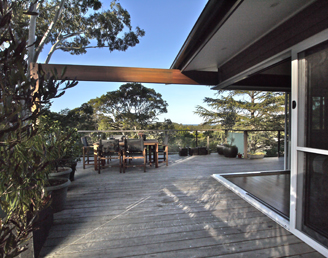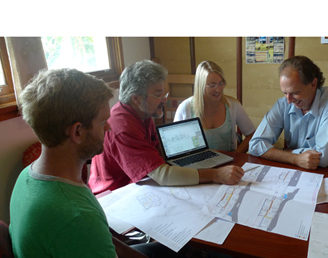Wood you? Heating solutions for Australian winters.
Posted by admin on 09/04/2025 at 12:23 pmAs summer hints at its departure once again, Australians minds may shift towards the cooler months heading our way. For many, making do with what they have is a necessity yet for those fortunate enough to be assessing how to heat their home, whether a new build or a retrofit, the question of how may be looming large!
For generations, wood was the default solution for heat generation. It was readily available, affordable and in many cases aided in land management by reducing bushfire risk through reduced fuel loads. Plus, fire is primal!
Most Australian homes have moved well past the open fireplace, while romantic in feel, they were never especially good at heating beyond their radiative heat to those immediately adjacent. Their efficiency (heat output versus energy in) is ~25% with most heat disappearing up the chimney while also dragging in replacement air from outside via gaps and cracks creating drafts and discomfort. But they look cool!
The slow combustion wood stove became the replacement of choice. The enclosed firebox and dedicated flue improve the efficiency, heading towards 80%. The replacement air remains the same challenge, the fire draws air into it from wherever available for combustion. As the majority of fires do not have a dedicated air supply, they pull outdoor air (the cool stuff you were trying to avoid) into the home via gaps, cracks, wall cavities (not clean places); this both adds to indoor pollution and cools the home.
There are a series of wood stoves that do have their own air supply. This is a great step forward as it reduces the pollution from infiltration. It draws the cool outdoor air straight into the firebox and, so long as this duct is well insulated, this has minimal impact on the internal room temperatures. The primary barrier to this becoming the standard installation approach is cost and skill. Aside from any uplift in the cost of the wood stove itself, there are several thousand dollars worth of additional parts as well as labour for this system to be properly installed and airtighted.
Aside from the concerns above about the source of replacement air, the primary indoor air quality concern relates to the pollution created from burning stuff indoors! As with gas cooktops, any combustion process produces stuff that is not great for human health whether they be chemicals or particulate matter. The flue reduces the impacts of this but does not eliminate the pollution into the home in the same way a rangehood reduces the impact of a gas stove but does not eliminate it.
The particulate matter pollution often is greater in the immediate neighbourhood than inside the home itself. In many towns and cities around the country the health impacts on others is an increasing concern and often a tension point locally. The increasing presentations with asthma and other respiratory illnesses put those with underlying health conditions in conflict with those burning wood; it becomes an equity issue.
The other considerations need to include the genuine risk of fire, as in burning down the house! While not common, it does occur as can burns from touching hot things, a special consideration for those with small children.
In addition to the health impacts there are cost implications for those not harvesting their own timber. One Sydney client wrote post-renovation: we would get 1 tonne of premium ironbark delivered (you can get cheaper, but this is the best slow-burning wood) for $450. Working from home and keeping the fire going all day we would go through about 1.5 tonne per month, so about $675/month. The first winter having the new reverse cycle and double glazing instead, I worked out added approx $100/month to the power bill (running most waking hours with thermostat at 20 deg C)
The other consideration in this heating equation is ‘how much heat do I need’? While we don’t love rules of thumb, because we like to calculate the actual answers, we do use them from time to time! A wood stove can have an output from 4KW upwards, these can work out to be 100-200W/m2 of your home. This compares to the heating load limit of a passivhaus of 10W/m2.
The primary challenge (after paying for it) of a slow combustion stove in a high performing home is that they are massively oversized. Unlikely an air conditioner which can cycle on and off as needed, the stove is either on or off. We have various friends and colleagues who have installed wood burners in their passivhaus certified homes. All freely admit that they rarely use the fire and when they do, it is for the ambience rather than genuine need. It is nearly always done in conjunction with opening doors in order to avoid overheating the home.
Our clients at Copacabana had bought an existing home and lived there for a year when we began designing the renovation project. While this home was not built to the passivhaus standard we implemented what we could (insulation, improved airtightness, great windows, mechanical ventilation).
Their recent experience of the home had been freezing cold in winter with the wood fired stove being used continually throughout winter. During the design phase there had been much discussion about what would happen to it. We had been confident that it was not necessary, the clients not swayed by our words so it remained in the project. The fire still remains in the home yet does not get used….
Yet with all of this said, we know that fire is primal and humans are drawn to it so how do we scratch that itch?
We strongly believe it should not be burning things inside our homes (air tight or otherwise) but we understand the draw of fire. A great outdoor fire pit or brick fireplace can be a great solution. My personal favorite is to have a wood fired pizza oven; fire and food are a pragmatic solution that allow me to justify the burning of stuff occasionally.
There are various technical options for how to heat your home (in addition to the free heat from the sun with an appropriately designed-home), nearly all of them involve a heat pump though. Regardless of the detail of that answer, we do know that burning things inside a building is not good for occupants, neighbours or the planet.
Sustainable House Design
We will help you create a family home that works well, feels good, is kind to the environment, culturally appropriate and reduces your energy and running costs.
Read MoreSustainable Commercial Buildings
We design your building to help reduce your operating costs, optimize the life cycle of your building, increase your property value and increase employee productivity.
Read MoreWorking with Envirotecture
We design beautiful, sustainable buildings that work for you, your family or your business. Full range of building design, consulting and training services.
Read More






















